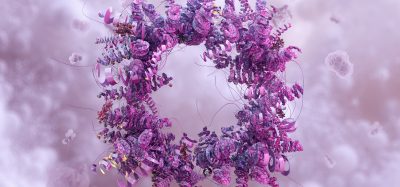Protein associated with Lyme disease arthritis discovered
Posted: 14 May 2021 | Victoria Rees (Drug Target Review) | No comments yet
A team has shown that the NapA protein, associated with Lyme disease, attracts inflammatory molecules in the body.


In a new study, researchers have discovered a protein associated with Lyme disease that plays a role in triggering inflammation in Lyme arthritis patients by antagonising the patients’ immune system. The research was conducted at Virginia Tech, US.
According to the researchers, almost all bacteria, including the Lyme disease-causing bacterium, make a mesh-like bag to protect the inside of their cells, known as peptidoglycan. In 2019, the peptidoglycan of the bacterium Borrelia burgdorferi was identified as a likely culprit of the inflammation and Lyme arthritis. Peptidoglycan was shown to linger in the bodies of Lyme arthritis patients after the bacteria had entered the body. Weeks to months after the initial infection, peptidoglycan remained, inciting inflammation and pain.
In the current study, the researchers found a protein associated with peptidoglycan that plays an amplifying role in causing inflammation.
“This discovery furthers our understanding of how Borrelia burgdorferi causes inflammation and disease,” said Mari Davis, lead author on the paper. “It is a testament to how unique that this bacterium is – and how we need to keep working to understand more about what is going on behind the scenes in order to develop future diagnostics and treatments.”
Using an unbiased proteomics approach and mass spectrometry, the team identified the protein to be Neutrophil Attracting Protein A (NapA). This protein is an immunomodulatory molecule that is able to recruit immune cells, called neutrophils, toward the inflammatory peptidoglycan.
The team say that NapA seems to play a basic role in bacterial life by helping the overall protective properties of the peptidoglycan, but is capable of tricking the immune system.
“We believe NapA’s devious side has two modes: early in infection, when bacteria are dying and releasing NapA and peptidoglycan, it acts as a decoy to attract immune cells, which allows the viable bacteria to escape and cause disease. In later stages of disease, it may act to attract immune cells to peptidoglycan, a molecule capable of causing inflammation and arthritis,” said lead researcher Assistant Professor Brandon Jutras.
To determine how NapA attracted neutrophils, the team placed neutrophils in the middle of a microfluidic chip. On one side of the chip, there was pure peptidoglycan, on the other was peptidoglycan with NapA. The researchers showed that neutrophils rapidly migrate toward the side with NapA, proving that the protein is able to give off chemical signals that attract neutrophils in the direction of it and peptidoglycan.
“From a prevention and diagnostic perspective, it is possible that the combination of peptidoglycan and NapA could be a novel target for diagnostics,” Jutras said. “It could, in theory, be a possible avenue of vaccine development as well. These are big picture possibilities that we are actively pursuing. One thing that we know for sure is that this finding furthers our understanding of how peptidoglycan can drive Lyme arthritis patient symptology.”
The findings are published in PLOS Pathogens.
Related topics
Molecular Targets, Protein, Proteomics
Related conditions
Lyme disease
Related organisations
Virginia Tech
Related people
Assistant Professor Brandon Jutras, Mari Davis








